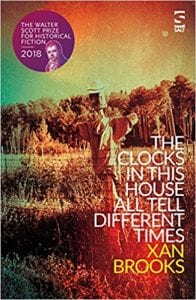Touring the UK’s community bookshops
By uczcmsm, on 2 October 2018
My dissertation gave me the joyful opportunity to visit exciting, innovative, passionate bookshops in the UK, all initiated and run by local people. In the process of my research, I have become fascinated by, perhaps obsessed, with the wonders and intricacies of community businesses. I travelled the country to find out more about each of these bookshops and to pick their brains about what makes them tick, why they began in the first place and how they fit into their local community, and into the UK’s book industry.
First up I visited the bookshop that inspired my dissertation: Crediton Community Bookshop. This bookshop is situated in a small market town in Mid Devon and serves the town and surrounding rural area. A bookshop bought by the community in 2012, CCB has come a long way: they have bought a new premises, created partnerships with many local organisations, and have won awards for their wide-reaching schools programme. They have exciting plans to expand their team and services – so what this space! (Well not this space, but their website!)
Next up, I travelled to the beautiful Malvern Hills to Malvern Book Cooperative. MBC is a co-operative society and have over 100 members. The shop is run by four part-time staff who are passionate about different areas of the business. MBC have a café – in the three hours I was in the shop it was lovely to see so many members, locals and tourists pop into the shop, enjoying the tasty cake and browsing shelves filled with beautiful books. They also have an impressive events programme featuring a wide variety of authors.
A few weeks later I visited October Books, a 40-year-old bookshop in Southampton. One of the longest-running UK community bookshops, OB were part of a pioneering collective of cooperative societies in Southampton at the end of the 20th century. OB are proud of their diverse, eco-friendly products. Alongside books, OB sell fairly-traded products, eco-friendly toiletries and organic food. October Books began as a worker’s coop: the staff own the shop. They have a large volunteer support network, which provides opportunities for many of Southampton’s students. OB have also just purchased a bank…
Whilst staying with my Gran, I took a day trip to the Norfolk town of Wymondham to visit Kett’s Books. KB is a Community Interest Company, a company created to benefit its community. KB serves a wide range of customers, supports and hosts numerous book groups, has a thriving schools programme and a large focus on ensuring their volunteers are utilised and nurtured. You can find out more about KB by checking out this lovely little report they produce every year.
At around this time I was offered my first publishing job (yay!) and so the time available to finish my dissertation interviews disappeared. One day in May I managed to visit two: Clevedon Community Bookshop and Dartmouth Community Bookshop. ClCB is the only second-hand community bookshop in the UK (or at least it was when I visited; there is now another in Glossop – George Street Books). They have an overwhelming amount of stock and incredibly dedicated staff who manage, catalogue, move and rebind their books. Due to the high value of many of the books they sell, ClCB have a thriving online business. They also host writing groups and local author events and have even published a couple of books of their own!
After a speedy (but not too speedy) journey from North Somerset to South Devon, I arrived at Dartmouth Community Bookshop. DCB sits nestled in the cobbled streets of the seaside town and fits the atmosphere beautifully. The bookshop opened when the Harbour Bookshop (founded by A. A. Milne’s son) announced its impending closure. Locals didn’t want the town to be without a bookshop and so gathered together to create a community bookshop. Dartmouth have a symbiotic relationship with the local library and, with their one paid manager and team of volunteers, have ensured the presence of a bookshop in Dartmouth.
In the two working days before I started my new job I managed to finish off my interviews. Due to Moon Lane Ink’s recent launch, it wasn’t possible to meet with the manager. I was, however, able to grab her for a 20-minute phone call and chat about all the exciting things they’re doing. MLI came about when Tales on Moon Lane, an innovative, award-winning bookshop in London, wanted to expand their social enterprise activities. In order to do this, they set up a Community Interest Community that aims to raise equality in children’s publishing. They achieve this by taking authors into schools, organising book fairs and class visits to the bookshop, and encouraging families in their reading habits.
My last visit was to BookTrust, a children’s reading charity whose programmes aim to inspire reading for pleasure and ensure all children have access to books. They do this through gifting programmes and curating suggested reading lists across a variety of categories. Whilst this charity obviously isn’t a community bookshop, it was fascinating to hear about the positive social impact they are having on children throughout the UK.
Unfortunately, I wasn’t able to visit News from Nowhere (a radical bookshop in Liverpool) but if I ever have the opportunity to expand on my dissertation research they will be my first stop!
These shops are all run by members of the local community and reflect the individuality of each location. If you ever get the chance, pop into any (or all) of them and ask about their story!
 Close
Close














